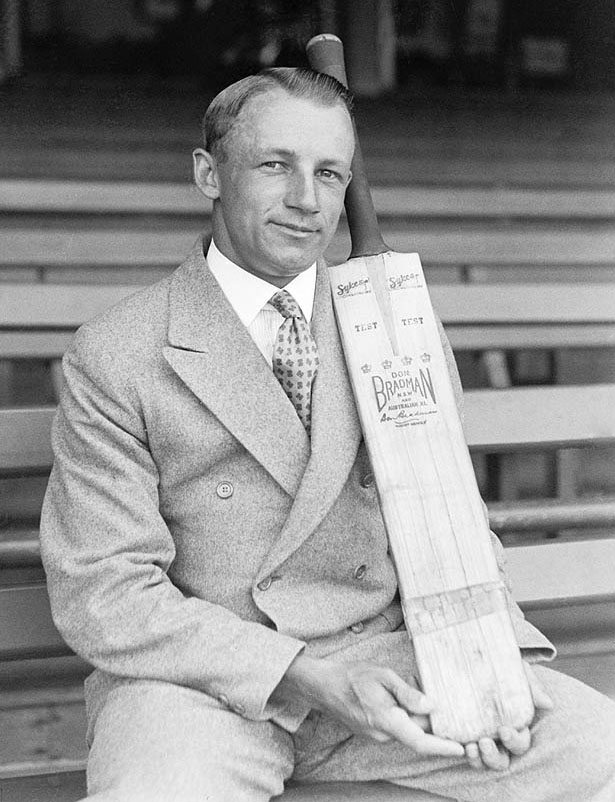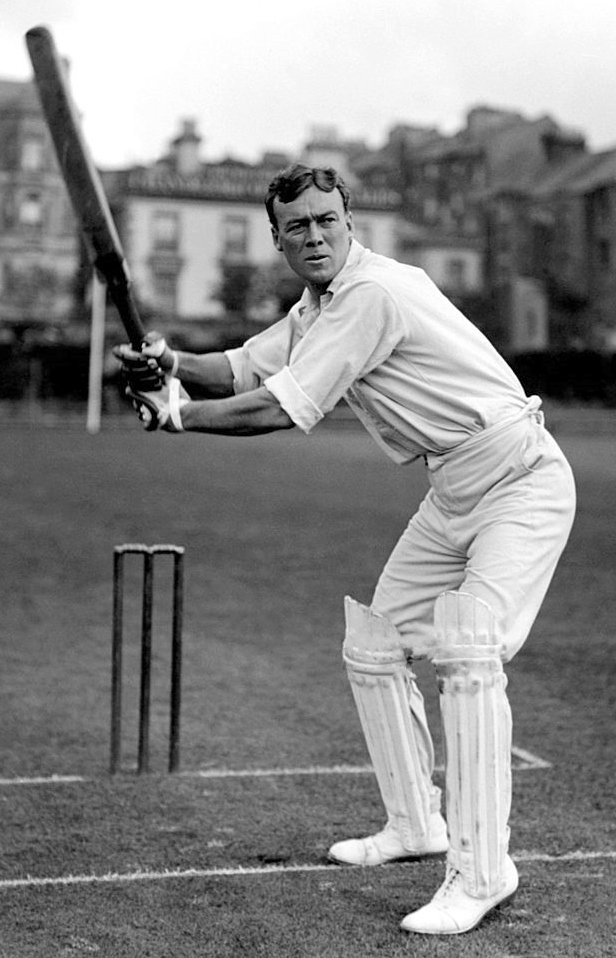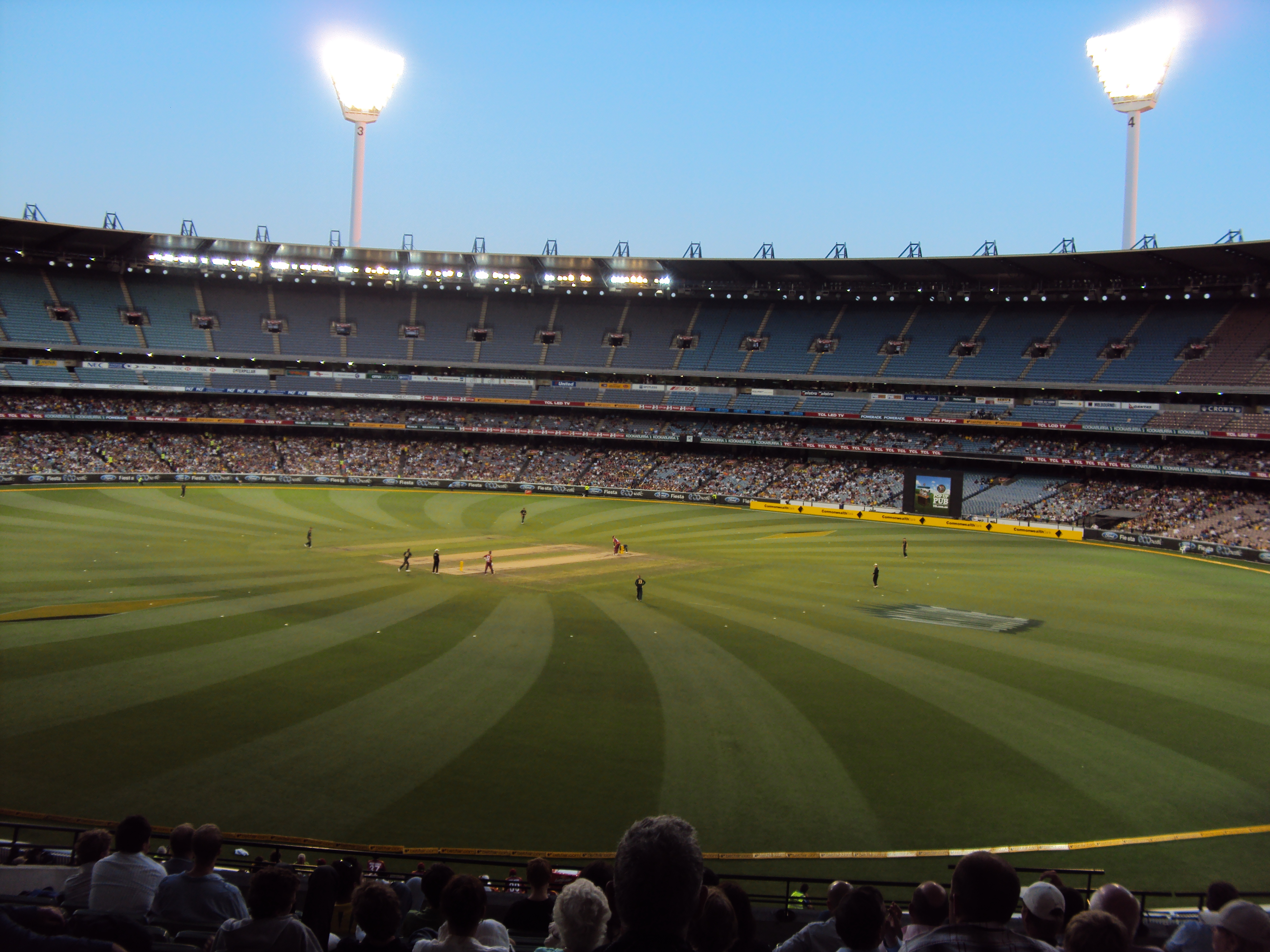|
Dale Steyn
Dale Willem Steyn (; born 27 June 1983) is a South African former professional cricketer who played for the South African Cricket Team. He is often regarded as one of the greatest fast bowlers of all time and the best Test bowler of his generation. During the 2007–08 season, Steyn achieved a tally of 78 wickets at an average of 16.24, and was subsequently rewarded with the ICC 2008 Test Cricketer of the Year Award. He was named one of the Wisden Cricketers of the Year in 2013, and Wisden Leading Cricketer in the World for the year 2013 in 2014's Wisden Cricketers' Almanack. He was featured in Wisden Cricketers of the Decade at the end of 2019. He also was included in the ICC Test Team of the Decade at the end of 2020. Steyn dominated the number one spot in the ICC Test rankings during the peak of his career, for a record 263 weeks between 2008 and 2014. Sri Lankan Muttiah Muralitharan sits next on the list with 214 weeks. In terms of days, Steyn has spent 2,356 days at the ... [...More Info...] [...Related Items...] OR: [Wikipedia] [Google] [Baidu] |
Phalaborwa
Phalaborwa (translated to English as ''better than the south; phala'' means ''better than and borwa'' means ''south'') is a town in the Mopani District Municipality, Limpopo province, South Africa. It is located near the confluence of the Ga-Selati River and the Olifants River (Limpopo), Olifants, halfway up along the western border of the Kruger National Park in the Lowveld. Name The name "Ba-Phalaborwa", given to the area by the Sotho people, Sotho tribes who moved here from the south, means "better than the south". The Sotho mined and smelted copper and iron ore here as far back as 400 AD. Masorini, near Phalaborwa gate, is a reconstructed Ba-Phalaborwa hill village, with huts, grain storage areas, and an iron smelting site. Surrounding townships There are two townships, Namakgale and Lulekani where the Pedi people, Pedi and Tsonga people, Tsonga reside, and rural areas such as Mashishimale, Humulani, Kurhula (Matshama Hi Nkano), Ben Farm (Majeje), Makushane and Ga-Maseke.Ga- ... [...More Info...] [...Related Items...] OR: [Wikipedia] [Google] [Baidu] |
Melbourne Stars
The Melbourne Stars are an Australian Twenty20 franchise cricket team, based in Melbourne, Victoria that competes in Australia's Twenty20 competition, the Big Bash League. The Stars wear a green uniform and play their home matches at the Melbourne Cricket Ground. Glenn Maxwell, recently achieved the highest individual score in Big Bash League history, scoring 154* against the Hobart Hurricanes at the MCG. Season results Honours Domestic *Big Bash: **Champions (0): ***''Runners Up (3):'' 2015–16, 2018–19, 2019–20 ***''Minor Premiers (2):'' 2013–14, 2019–20 **Finals Series Appearances (8): 2011–12, 2012–13, 2013–14, 2014–15, 2015–16, 2016–17, 2018–19, 2019–20 ***''Wooden Spoons (1):'' 2017–18 Mascots Starman & Starlet are two of the official mascots of the Melbourne Stars. In BBL, 05 the Stars introduced a secondary mascot, Steven Seagull, the year after a seagull was struck with a cricket ball hit by Perth Scorchers batsman Adam Vog ... [...More Info...] [...Related Items...] OR: [Wikipedia] [Google] [Baidu] |
Wisden Cricketers' Almanack
''Wisden Cricketers' Almanack'', or simply ''Wisden'', colloquially the Bible of Cricket, is a cricket reference book published annually in the United Kingdom. The description "bible of cricket" was first used in the 1930s by Alec Waugh in a review for the ''London Mercury''. In October 2013, an all-time Test World XI was announced to mark the 150th anniversary of ''Wisden Cricketers' Almanack''. In 1998, an Australian edition of ''Wisden Cricketers' Almanack'' was launched. It ran for eight editions. In 2012, an Indian edition of ''Wisden Cricketers' Almanack'' was launched (dated 2013), entitled ''Wisden India Almanack'', that has been edited by Suresh Menon since its inception. History ''Wisden'' was founded in 1864 by the English cricketer John Wisden (1826–84) as a competitor to Fred Lillywhite's '' The Guide to Cricketers''. Its annual publication has continued uninterrupted to the present day, making it the longest running sports annual in history. The sixth e ... [...More Info...] [...Related Items...] OR: [Wikipedia] [Google] [Baidu] |
Wisden Leading Cricketer In The World
The ''Wisden'' Leading Cricketer in the World is an annual cricket award selected by ''Wisden Cricketers' Almanack''. It was established in 2004, to select the best cricketer based upon their performances anywhere in the world in the previous calendar year. A notional list of previous winners, spanning from 1900 to 2002, was published in the 2007 edition of ''Wisden''. Since 1889, ''Wisden'' has published a list of Cricketers of the Year, typically selecting five cricketers that had the greatest impact during the previous English cricket season. However, in the 2000 edition, the editor Matthew Engel recognised that the best players in the world were typically no longer playing English domestic cricket, and opted to select the Cricketers of the Year based on their performances anywhere in the world. This criterion was applied for the following three years, but in 2004 it reverted to being based on the English season, and a Leading Cricketer in the World was also selected. The rec ... [...More Info...] [...Related Items...] OR: [Wikipedia] [Google] [Baidu] |
Wisden Cricketers Of The Year
The ''Wisden'' Cricketers of the Year are cricketers selected for the honour by the annual publication ''Wisden Cricketers' Almanack'', based primarily on their "influence on the previous English season". The award began in 1889 with the naming of "Six Great Bowlers of the Year", and continued with the naming of "Nine Great Batsmen of the Year" in 1890 and "6 Great Wicket-Keepers" in 1891. Since 1897, with a few notable exceptions, the annual award has recognised five players of the year. No players were named in 1916 or 1917, as the First World War prevented any first-class cricket being played in England, while in 1918 and 1919 the recipients were five schoolboy cricketers. From 1941 to 1946, the Second World War caused the same issue and no players were named. Three players have been sole recipients: W. G. Grace (1896), Plum Warner (1921) and Jack Hobbs (1926). The latter two selections are the only exceptions to the rule that a player may receive the award only once. Hobb ... [...More Info...] [...Related Items...] OR: [Wikipedia] [Google] [Baidu] |
Fast Bowlers
Fast bowling (also referred to as pace bowling) is one of two main approaches to bowling in the sport of cricket, the other being spin bowling. Practitioners of pace bowling are usually known as ''fast'' bowlers, ''quicks'', or ''pacemen''. They can also be referred to as a ''seam'' bowler, a ''swing'' bowler or a ''fast bowler who can swing it'' to reflect the predominant characteristic of their deliveries. Strictly speaking, a pure swing bowler does not need to have a high degree of pace, though dedicated medium-pace swing bowlers are rarely seen at Test level in modern times. The aim of pace bowling is to deliver the ball in such a fashion as to cause the batsman to make a mistake. The bowler achieves this by making the hard cricket ball deviate from a predictable, linear trajectory at a sufficiently high speed that limits the time the batsman has to compensate for it. For deviation caused by the ball's stitching (the seam), the ball bounces off the pitch and deflects eith ... [...More Info...] [...Related Items...] OR: [Wikipedia] [Google] [Baidu] |
South African Cricket Team
The South Africa national cricket team, also known as the Proteas, represents South Africa in men's international cricket and is administered by Cricket South Africa (CSA). South Africa is a full member of the International Cricket Council (ICC), with Test, One-Day International (ODI) and Twenty20 International (T20I) status. Its nickname derives from South Africa's national flower, ''Protea cynaroides'', commonly known as the "King Protea". South Africa entered first-class and international cricket at the same time when they hosted an England cricket team in the 1888–89 season. Initially, the team was no match for Australia or England but, having gained experience and expertise, they were able to field a competitive team by the first decade of the 20th century. The team regularly played against Australia, England and New Zealand through to the 1960s, by which time there was considerable opposition to the country's apartheid policy. The ICC imposed an international ban on t ... [...More Info...] [...Related Items...] OR: [Wikipedia] [Google] [Baidu] |
Cricket
Cricket is a bat-and-ball game played between two teams of eleven players on a field at the centre of which is a pitch with a wicket at each end, each comprising two bails balanced on three stumps. The batting side scores runs by striking the ball bowled at one of the wickets with the bat and then running between the wickets, while the bowling and fielding side tries to prevent this (by preventing the ball from leaving the field, and getting the ball to either wicket) and dismiss each batter (so they are "out"). Means of dismissal include being bowled, when the ball hits the stumps and dislodges the bails, and by the fielding side either catching the ball after it is hit by the bat, but before it hits the ground, or hitting a wicket with the ball before a batter can cross the crease in front of the wicket. When ten batters have been dismissed, the innings ends and the teams swap roles. The game is adjudicated by two umpires, aided by a third umpire and match referee ... [...More Info...] [...Related Items...] OR: [Wikipedia] [Google] [Baidu] |
First-class Cricket
First-class cricket, along with List A cricket and Twenty20 cricket, is one of the highest-standard forms of cricket. A first-class match is one of three or more days' scheduled duration between two sides of eleven players each and is officially adjudged to be worthy of the status by virtue of the standard of the competing teams. Matches must allow for the teams to play two innings each, although in practice a team might play only one innings or none at all. The etymology of "first-class cricket" is unknown, but it was used loosely before it acquired official status in 1895, following a meeting of leading English clubs. At a meeting of the Imperial Cricket Conference (ICC) in 1947, it was formally defined on a global basis. A significant omission of the ICC ruling was any attempt to define first-class cricket retrospectively. That has left historians, and especially statisticians, with the problem of how to categorise earlier matches, especially those played in Great Britain be ... [...More Info...] [...Related Items...] OR: [Wikipedia] [Google] [Baidu] |
Twenty20 International
A Twenty20 International (T20I) is a form of cricket, played between two of the international members of the International Cricket Council (ICC), in which each team faces a maximum of twenty overs. The matches have top-class status and are the highest T20 standard. The game is played under the rules of Twenty20 cricket. Starting from the format's inception in 2005, T20I status only applied to Full Members and some Associate Member teams. However, in April 2018, the ICC announced that it would grant T20I status to all its 105 members from 1 January 2019. The shortened format was initially introduced to bolster crowds for the domestic game, and was not intended to be played internationally, but the first Twenty20 International took place on 17 February 2005 when Australia defeated New Zealand, and the first tournament was played two years later, with the introduction of the ICC T20 World Cup. In 2016, for the first time in a calendar year, more Twenty20 International matches (1 ... [...More Info...] [...Related Items...] OR: [Wikipedia] [Google] [Baidu] |
One Day International
A One Day International (ODI) is a form of limited overs cricket, played between two teams with international status, in which each team faces a fixed number of overs, currently 50, with the game lasting up to 9 hours. The Cricket World Cup, generally held every four years, is played in this format. One Day International matches are also called Limited Overs Internationals (LOI), although this generic term may also refer to Twenty20 International matches. They are major matches and considered the highest standard of List A, limited-overs competition. The international one day game is a late-twentieth-century development. The first ODI was played on 5 January 1971 between Australia and England at the Melbourne Cricket Ground. When the first three days of the third Test were washed out officials decided to abandon the match and, instead, play a one-off one day game consisting of 40 eight-ball overs per side. Australia won the game by 5 wickets. ODIs were played in white-co ... [...More Info...] [...Related Items...] OR: [Wikipedia] [Google] [Baidu] |
Test Cricket
Test cricket is a form of first-class cricket played at international level between teams representing full member countries of the International Cricket Council (ICC). A match consists of four innings (two per team) and is scheduled to last for up to five days. In the past, some Test matches had no time limit and were called Timeless Tests. The term "test match" was originally coined in 1861–62 but in a different context. Test cricket did not become an officially recognised format until the 1890s, but many international matches since 1877 have been retrospectively awarded Test status. The first such match took place at the Melbourne Cricket Ground (MCG) in March 1877 between teams which were then known as a Combined Australian XI and James Lillywhite's XI, the latter a team of visiting English professionals. Matches between Australia national cricket team, Australia and England cricket team, England were first called "test matches" in 1892. The first definitive list of retro ... [...More Info...] [...Related Items...] OR: [Wikipedia] [Google] [Baidu] |








